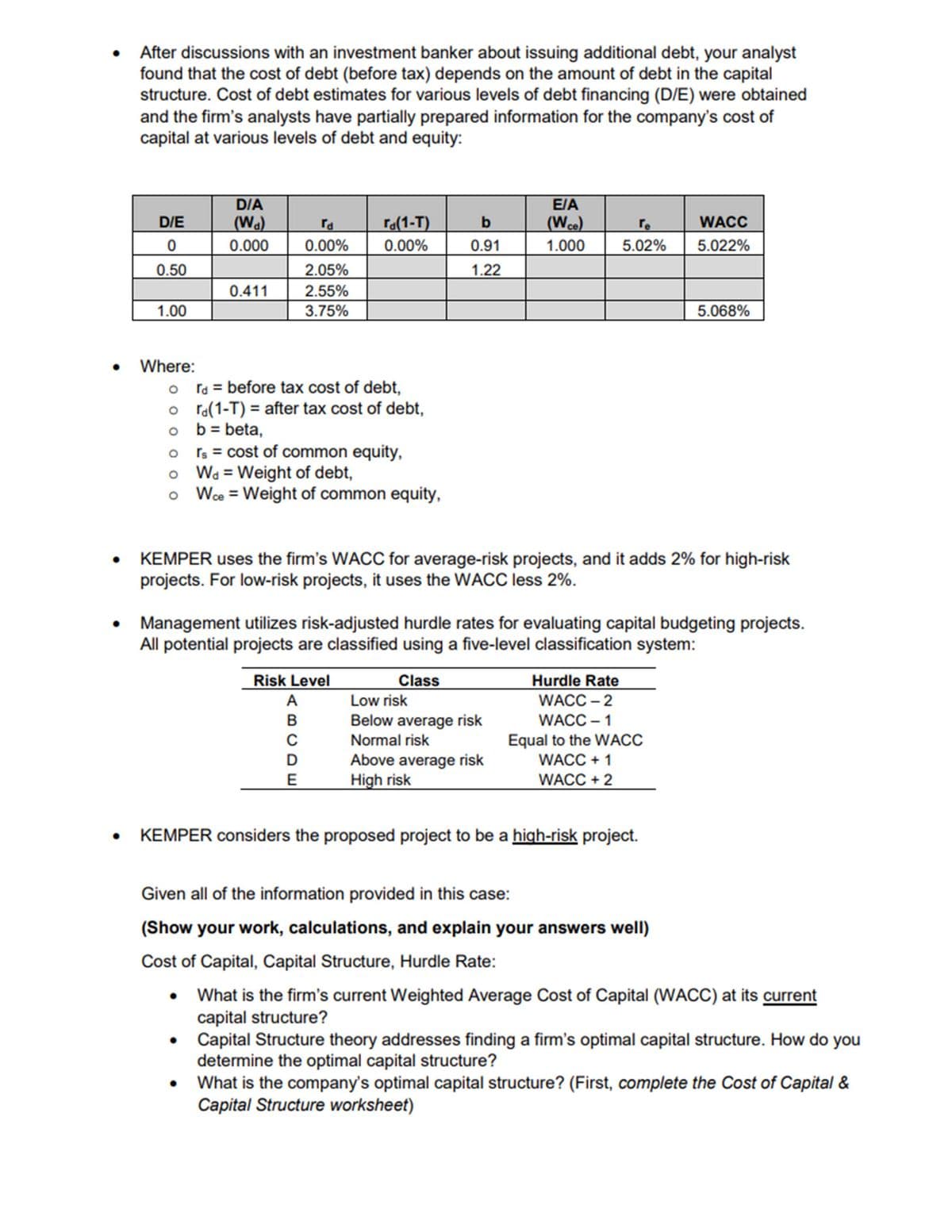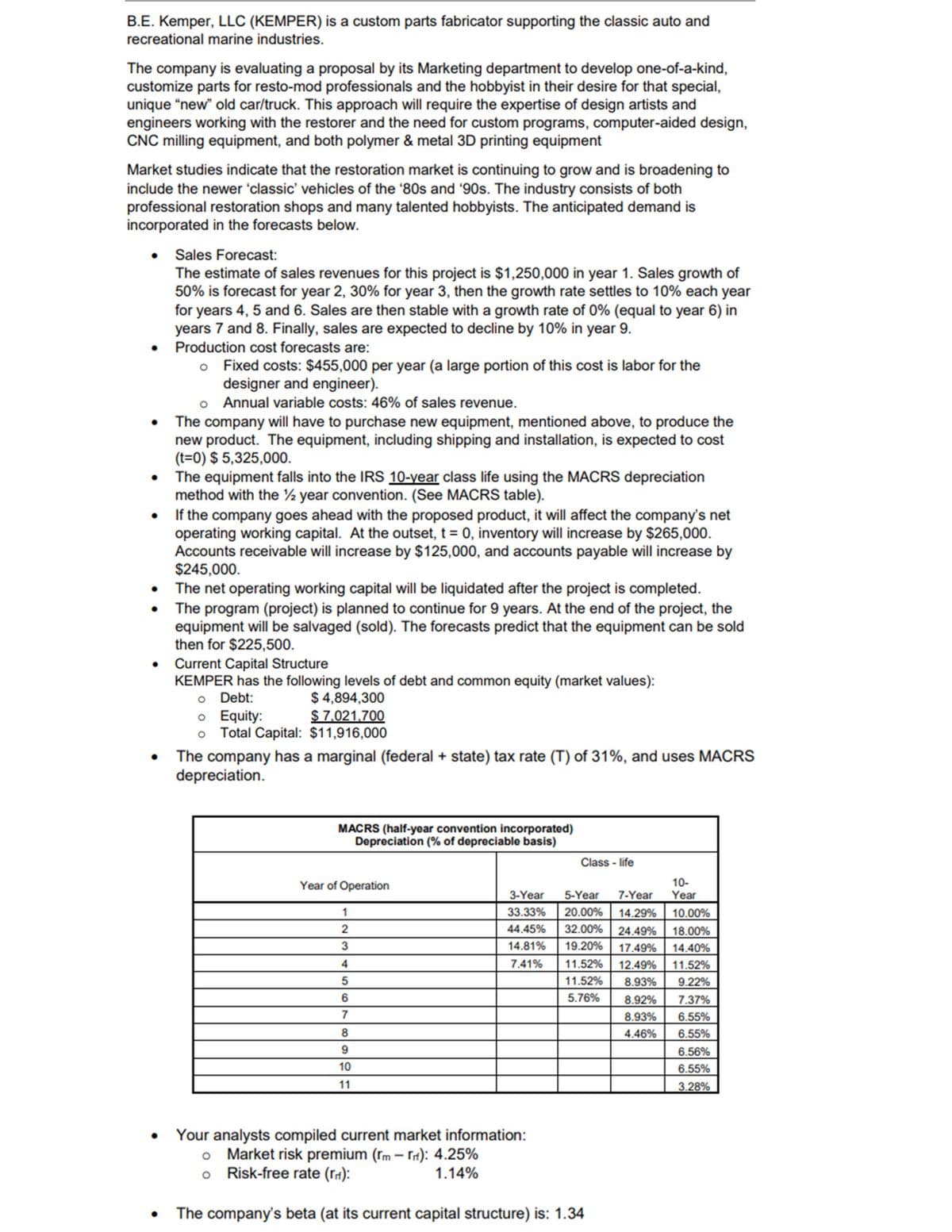After discussions with an investment banker about issuing additional debt, your analyst found that the cost of debt (before tax) depends on the amount of debt in the capital structure. Cost of debt estimates for various levels of debt financing (D/E) were obtained and the firm's analysts have partially prepared information for the company's cost of capital at various levels of debt and equity: E/A (Wee) D/A D/E (W) ra ra(1-T) b re WACC 0.000 0.00% 0.00% 0.91 1.000 5.02% 5.022% 0.50 2.05% 1.22 0.411 2.55% 1.00 3.75% 5.068% Where: ra = before tax cost of debt, o ra(1-T) = after tax cost of debt, b = beta, rs = cost of common equity, o Wa = Weight of debt, o Wce = Weight of common equity, KEMPER uses the firm's WACC for average-risk projects, and it adds 2% for high-risk projects. For low-risk projects, it uses the WACC less 2%. Management utilizes risk-adjusted hurdle rates for evaluating capital budgeting projects. All potential projects are classified using a five-level classification system: Hurdle Rate WACC - 2 Risk Level Class A Low risk Below average risk WACC - 1 Equal to the WACC WACC + 1 C Normal risk Above average risk High risk E WACC + 2 KEMPER considers the proposed project to be a high-risk project. Given all of the information provided in this case: (Show your work, calculations, and explain your answers well) Cost of Capital, Capital Structure, Hurdle Rate: What is the firm's current Weighted Average Cost of Capital (WACC) at its current capital structure? • Capital Structure theory addresses finding a firm's optimal capital structure. How do you determine the optimal capital structure? What is the company's optimal capital structure? (First, complete the Cost of Capital & Capital Structure worksheet)
Cost of Debt, Cost of Preferred Stock
This article deals with the estimation of the value of capital and its components. we'll find out how to estimate the value of debt, the value of preferred shares , and therefore the cost of common shares . we will also determine the way to compute the load of every cost of the capital component then they're going to estimate the general cost of capital. The cost of capital refers to the return rate that an organization gives to its investors. If an organization doesn’t provide enough return, economic process will decrease the costs of their stock and bonds to revive the balance. A firm’s long-run and short-run financial decisions are linked to every other by the assistance of the firm’s cost of capital.
Cost of Common Stock
Common stock is a type of security/instrument issued to Equity shareholders of the Company. These are commonly known as equity shares in India. It is also called ‘Common equity


Trending now
This is a popular solution!
Step by step
Solved in 4 steps with 4 images






